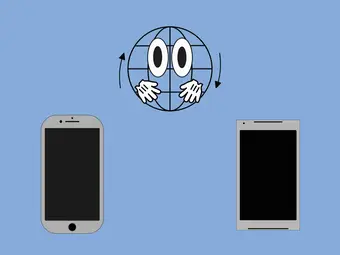Valentine’s day is approaching, and you might have a special someone in your life. Someone you can’t meet up with in person, so, ever the romantic, you want to send them a picture of yourself without any clothes on. I may have phrased it a little dryly, but you get the idea. Unfortunately, communication over the internet is insecure. Social media websites routinely experience leaks and data breaches. If you’re going to send nudes to someone, how can you do it securely?
Method 1: You can’t
Nothing is truly secure on the internet, as they say. When you send a picture to someone over a messaging app, the data goes from your device, to your network, to the messaging app’s servers, to the recipient’s network and finally to their device. There are potential vulnerabilities at each step of this journey. Your Internet Service Provider (ISP) could be hacked, for example, or your messaging app’s data could be leaked by a third party. If you’re concerned about your nudes falling upon the wrong eyes, you should find some way of sharing them without using the internet.
It’s also essential for your recipient to be someone you trust — the security of your messages depend on how secure your recipient keeps them. If you’re not confident that they’re on the same page as you with respect to privacy, you shouldn’t send them anything personal at all.
In addition, sharing these kinds of images when you’re underage is very much illegal. Don’t even think about it! You have much better things to do, such as your WRDS 150 homework.
Method 2: Find an app with end-to-end encryption
End-to-end encryption (E2EE) can make your message unreadable to third parties while it’s on its journey to the recipient’s device. While your communications are usually encrypted when they go from your network to the app’s server and so forth, E2EE will ensure that they will be decrypted and re-encrypted at each step.
Apps with E2EE will encode your messages when they’re still on your device and send the encrypted data all the way over to the recipient’s device, where it is decrypted into a viewable form. Neither your ISP’s nor the app’s administrators are able to decrypt your message — only the sender’s and receiver’s devices. This article contains a list of secure messaging apps that use E2EE.
Method 3: A DIY approach
I’m not going to let this article be just a bunch of links to various software solutions. I am going to fully take this opportunity to geek out over cryptography. Let’s say you want to place your risqué portraits in a password-protected zip file and send it to your intended recipient. How can you share the password with them securely? If you send it over the internet, it is vulnerable to on-lookers. You can’t password-protect the password, because then you’re back where you started. If you can tell the recipient the password in person, you could just give them the pictures in question on a USB drive or go home with them or whatever. This issue is called the “key exchange problem,” and was a major roadblock in cryptography for centuries.
It was solved with the Diffie-Hellman algorithm, in which each participant has their own private key. Let’s say you put your spicy images onto a USB drive and put it in a little box. You could then buy a padlock, lock the box shut and mail it to your intended recipient. Then, your recipient puts their own lock on the box and mails it back to you. Since the box has two locks on it, you can now remove your lock and mail it back to the recipient. They’ll be able to fully unlock the box, open it up and have access to the pictures of you in a state of undress. And neither of you had to exchange a key!
This is of course an analogy for a bunch of math. This video is an excellent walkthrough of the mathematics behind it. This is the basis for how E2EE works!
Method 4: Steganography
This is completely off-topic but I’m still going to talk about it. Steganography is the process of hiding a coded message within an image. It’s possible because digital images are represented by a bunch of numbers.
Let’s say I want to send you an image of a single pixel.
It’s in this colour — a nice, pale pink.
That single pixel is read by your computer as three numbers: the red, green and blue levels that your screen should display.
In the case of the above colour, the numbers are R: 255, G: 138 and B: 249. In binary, these numbers are 11111111, 10001010 and 11111001. There are 26 letters of the alphabet, which means that we can use five binary digits to encode each letter. Using that, I can change the above values to 11101001, 10001100 and 11111001.
It makes this new colour, which is just slightly darker.
But now, I could send that pixel to you, and you could isolate the last five digits of each binary number: 01001, 01100 and 11001. In decimal, these numbers are 9, 12 and 25. If you translate the numbers to their respective letters in the alphabet, you get
I L Y.How sweet!
Like anything personal or identifying, you should keep security in mind if you’re planning to send nudes to your special someone this Valentine’s day. Much like another thing you might get up to this season, make sure to be safe and take precautions!
First online
Share this article








